MedicalAlertBuyersGuide.org is an independent review site. We may earn money when you click on links on our site. Learn More
Apple Watch Medical Alert Review
by Jensen Wong | updated 3/24/2020
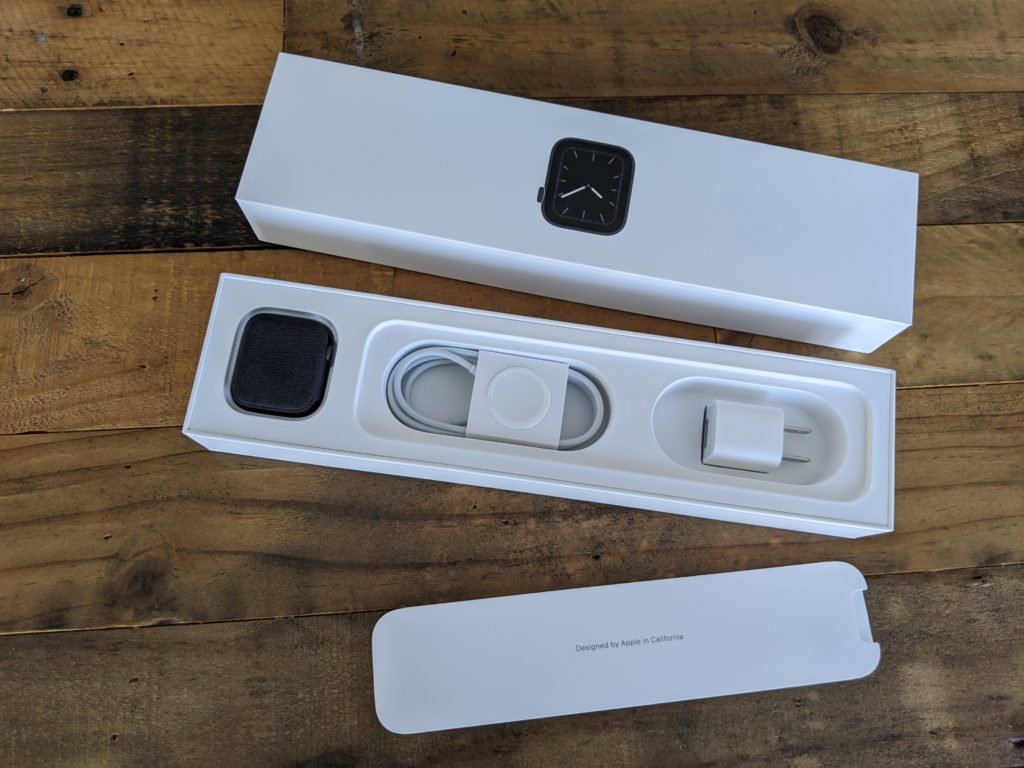
The Apple Watch was released in 2015 as a fitness-conscious smartwatch. Now in it’s 5th generation, the watch has acquired many more features and capabilities. In this review, we’ll go over the medical alert and automatic fall detection capabilities of the 40mm Apple Watch Series 5.
Equipment
There’s no denying that this is a beautiful device. True to the Apple brand, the device is meticulously designed to justify the price. The materials are both visually appealing and silky smooth to touch. The case is made of high grade aluminum and the graphics on the display are very detailed which are only enhanced by the glass on top.
Setup was a breeze. Kudos to Apple for always making their devices and ecosystem best in class when setting up. All that’s required is essentially just taking a photo of the watch screen with your iPhone and then just following the directions on the screen.
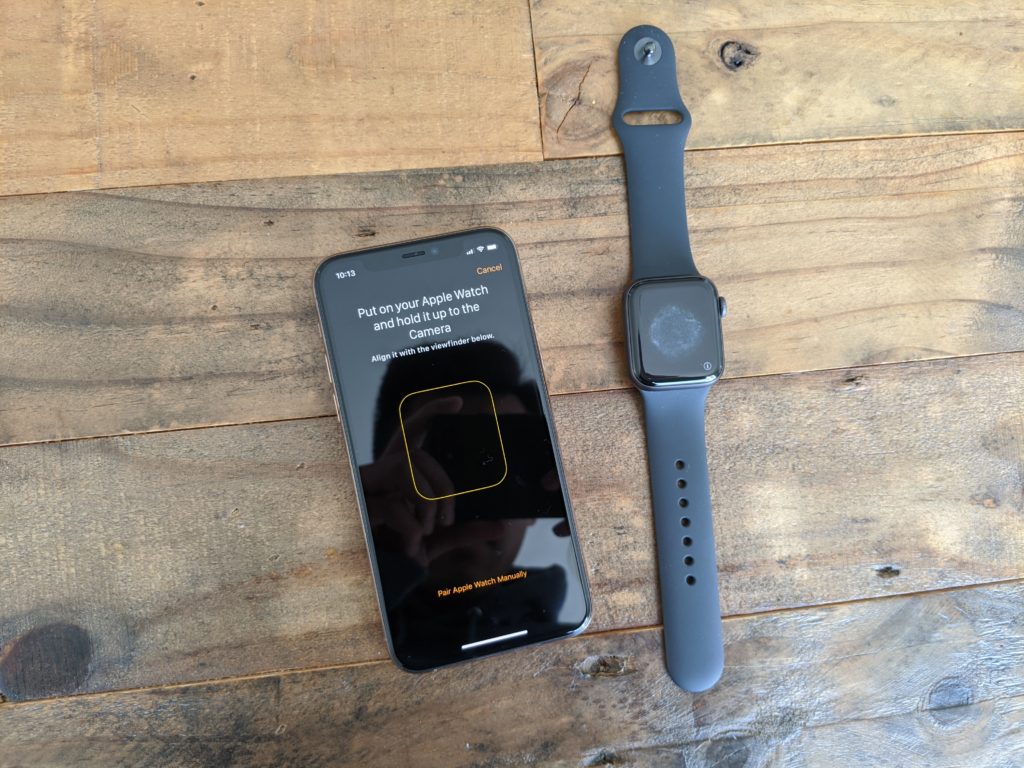
As a medical alert device, the obvious appeal is the stigma that the Apple Watch won’t have. If you or a loved one just doesn’t want to be seen with a help button, an Apple Watch can be an alternative and will make users feel more comfortable wearing it as opposed to a traditional medical alert device.
Battery Life
While there are a lot of advantages, with all smart devices, battery life should always be top of mind. In our month of testing, the Apple watch would last around 16 hours from fully charged to zero.
On the downside, two devices mean that users have to worry about two separate battery lives. An Apple Watch medical alert has greatly reduced capabilities if its accompanying iPhone has a dead battery. Senior users who have memory difficulties or just resilient to a change in routine may have trouble remembering to charge two separate batteries.
Customization
Apple Watches are known for being highly customizable with a wide variety of interchangeable bands and cases to tailor the device to any user’s style. These range from unique designs, to bright colors, to traditional metal aesthetics. The wide variety of accessories makes an Apple Watch medical alert very appealing.
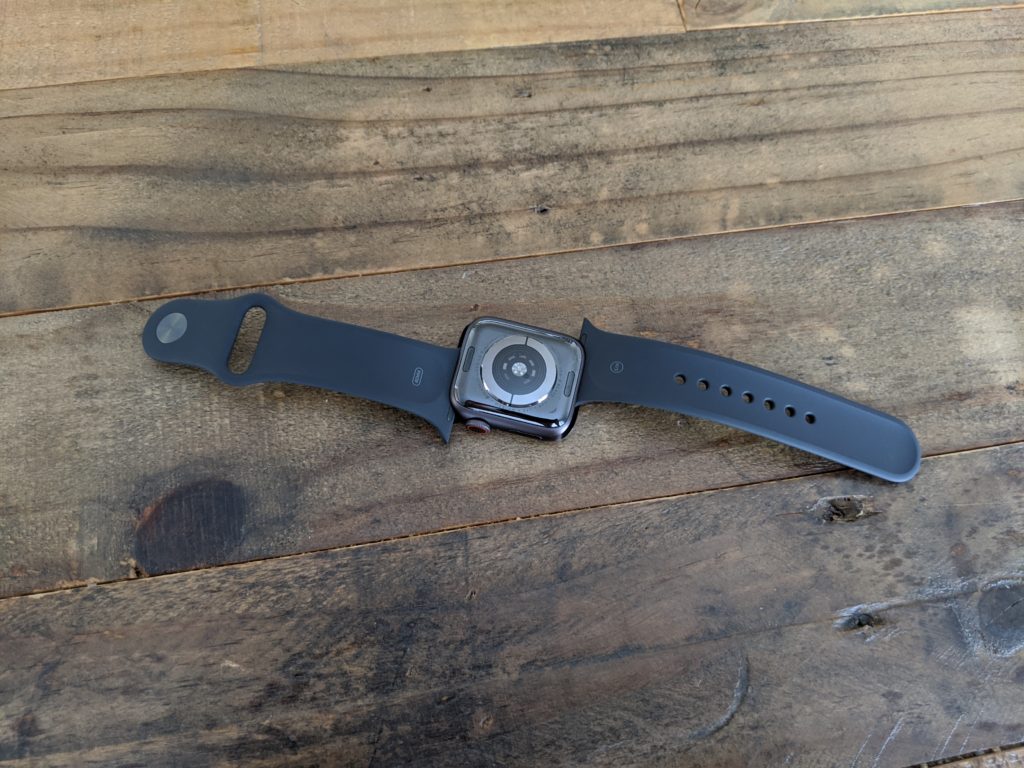
Monitoring
Although the Apple Watch includes similar functionality to traditional medical alert devices in its fall detection and emergency SOS features, since it doesn’t connect to a 24/7 live monitored call center, the device does not function at the same level as a medical alert system. See why we typically don’t recommend non-monitored devices as medical alert systems.
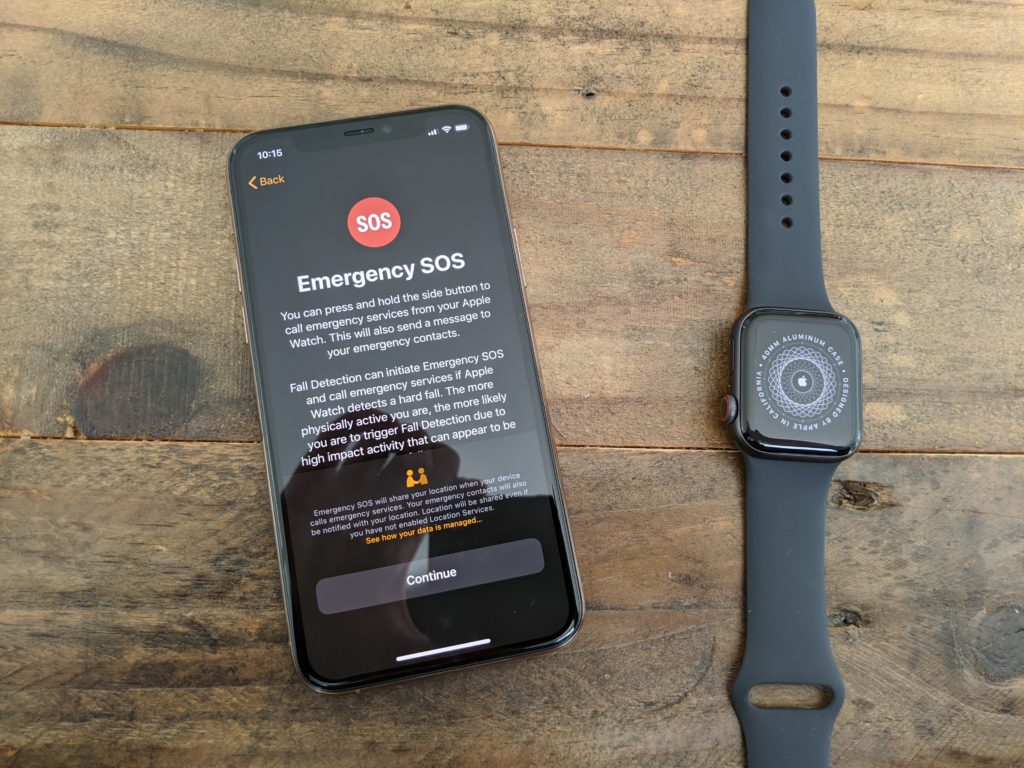
As of right now, the SOS feature on the Apple Watch will go directly to 911 as well as send a notification to your emergency contacts.
Fall Detection
Although Apple Watch includes a fall detection sensor, Apple emphasizes that it is not entirely accurate and may cause false alarms. Upon setup, you’ll have to agree to the terms and activate it before fall detection is turned on.
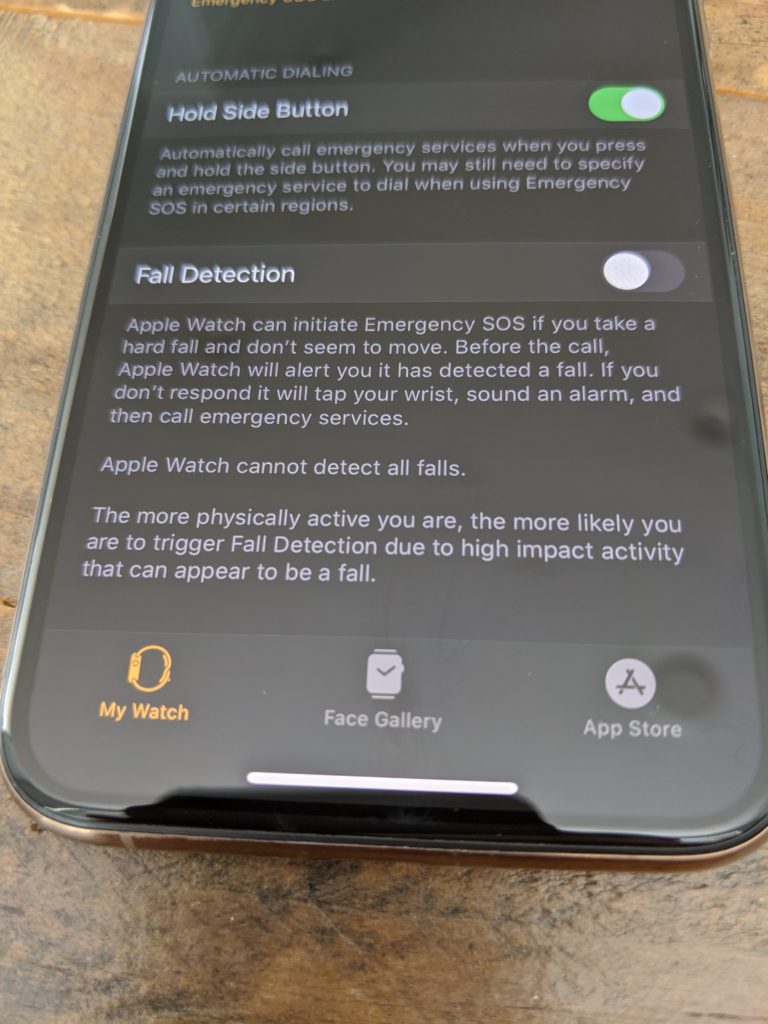
From our month-long testing, there were several cases of false positives during day to day activities. Being that the Apple Watch is on the wrist, we found that there could be many instances that could trigger fall detection. These include washing dishes, turning a steering wheel, and picking up a remote control, and other daily tasks.
While Apple has tons of resources and R&D, we’d still shy away from using this feature right now as it just wasn’t accurate enough to recommend.
Pricing
Having covered the medical alert industry for quite sometime, we know that affordability is a crucial element in the buying decision for people.
An Apple Watch, solely for the purpose of being used as a medical alert, is definitely an expensive proposition when compared to traditional medical alert devices.
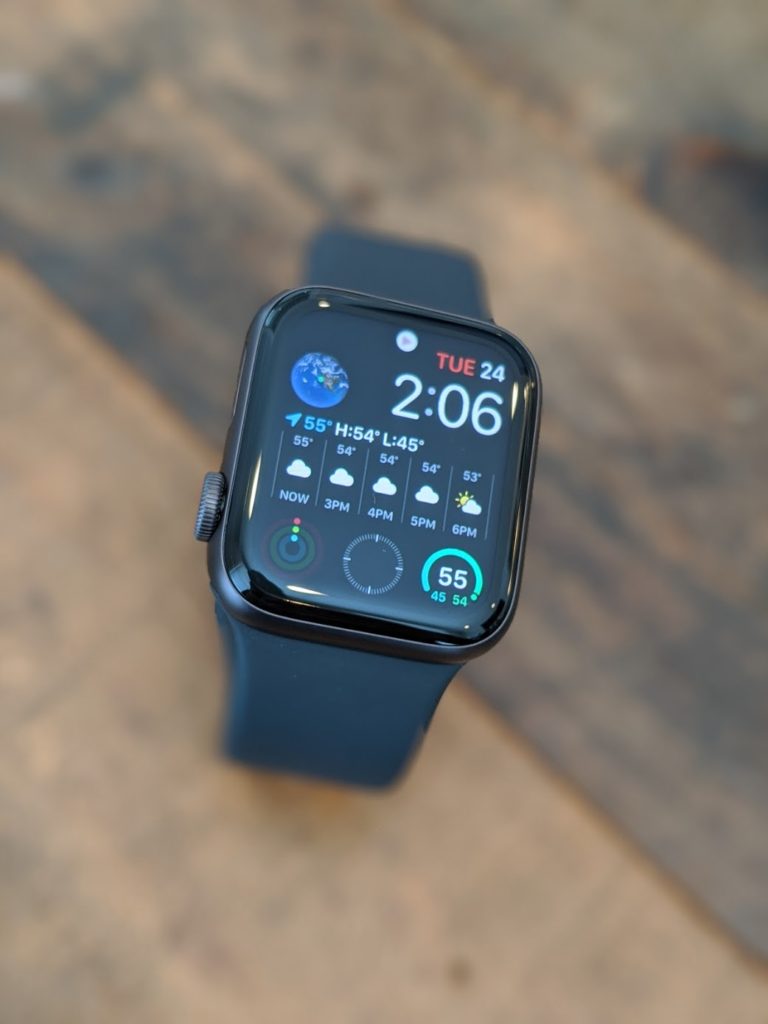
A user must have an iPhone (although we realize that most will get hand me down iphones from loved ones) to accompany an Apple Watch, and monthly service fees apply to both devices. The cost of two devices and two monthly fees may be unrealistic for some unless a user already owns these devices.
Here’s a breakdown of the costs in a range from low to high
Cost of new Apple iPhone: $699 – $1299
Cost of new Apple Watch: $399 – $799
iPhone subscription plan: from $65/mo
Watch subscription plan: from $10/mo + activation fees
You can quickly see that the costs will add up. Again we’re Apple users ourselves and have nothing but praise for these products. However if you’re looking to set mom and dad up with a watch simply for SOS/Fall Detection reasons that doesn’t include 24/7 live monitoring, we’d recommend steering clear and going with a traditional medical alert provider.
| Pros | Cons |
|---|---|
| ✓ The Apple brand | ✗Expensive |
| ✓ User-friendly design | ✗Requires an iPhone |
| ✓ Range of styles & colors | ✗Unmonitored |
Conclusion
Apple has a strong reputation and brand recognition as a premium smartphone provider. Apple devices are consistently rated high in quality, durability, and user-friendliness. The Apple Appstore also establishes high standards for apps before they’re accepted in the store. Apple continues to innovate and release new products to remain a leader in smartphone technology.
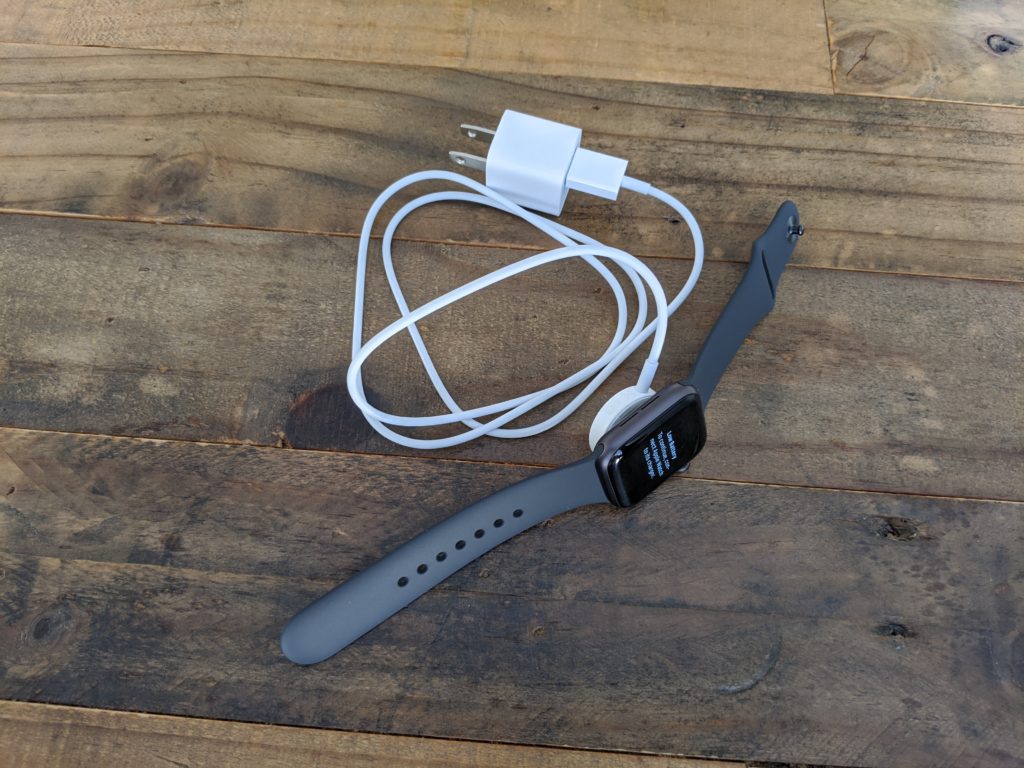
While the Apple Watch can be used as a medical alert device, it has numerous drawbacks for being used in such a role. The monthly service fees for an iPhone and Apple Watch may be unreasonable for most users, especially if they require third party emergency monitoring through the FallCall app for an extra monthly fee. Existing iPhone + Apple Watch users may find that using it for a medical alert device is worthwhile, but others should first consider medical alert device alternatives before using an Apple Watch medical alert.


